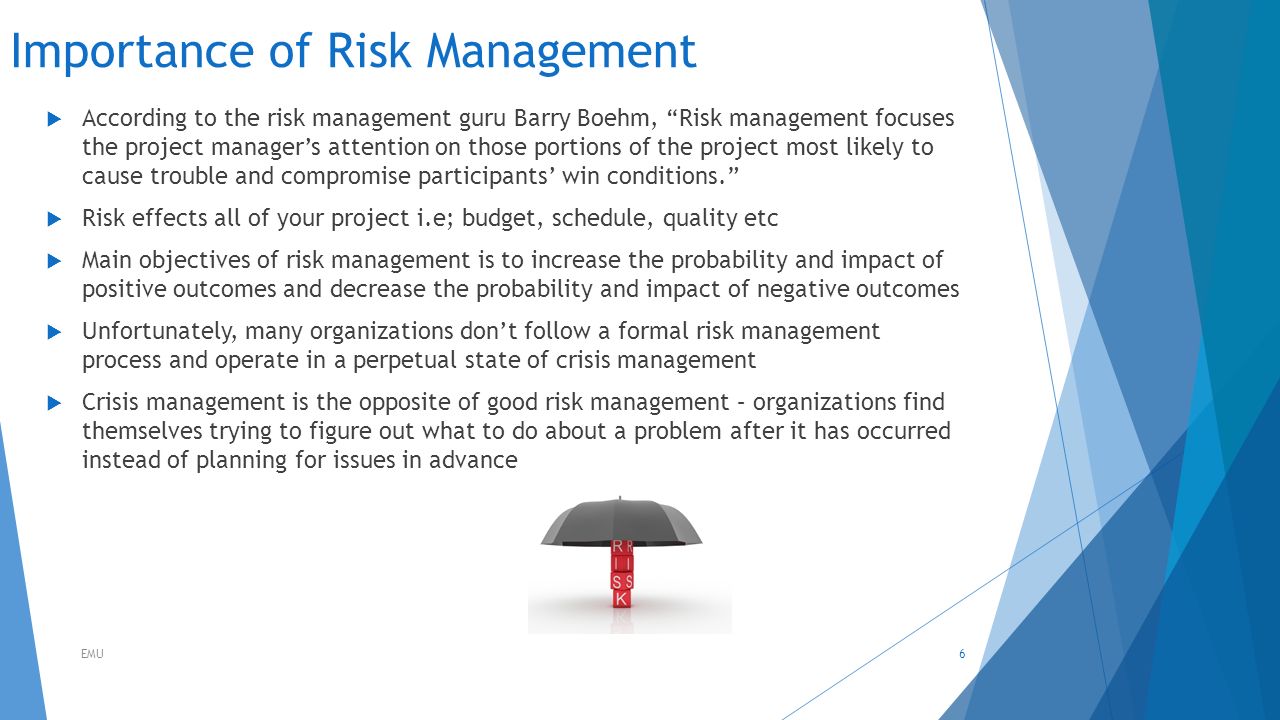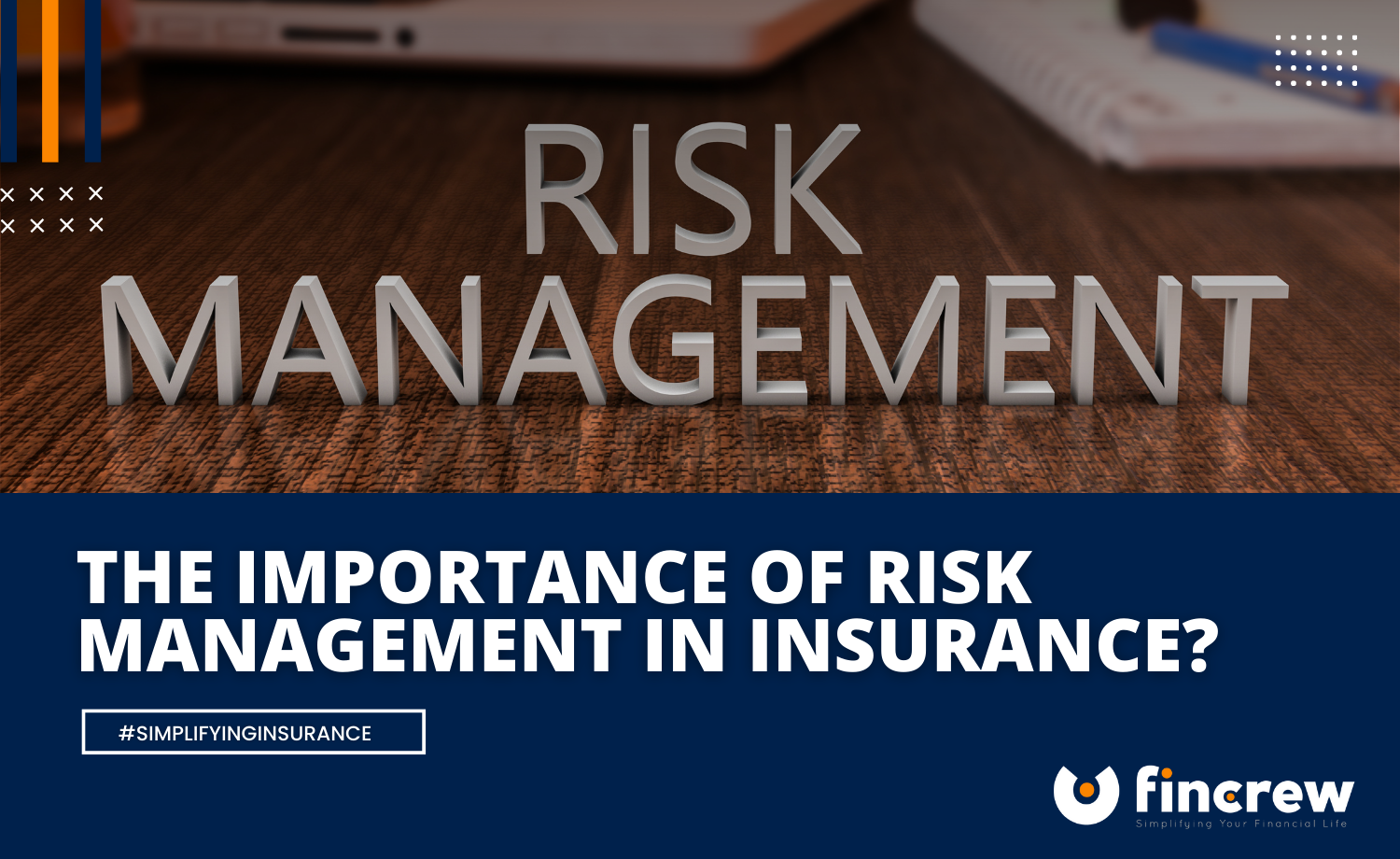Exploring the Long-Term Benefits and Importance of Risk Management for New Businesses
Exploring the Long-Term Benefits and Importance of Risk Management for New Businesses
Blog Article
Exploring the Relevance of Risk Management for Effective Decision-Making Methods
In the intricate globe of service, Risk Management emerges as an important factor in the decision-making procedure. The capability to recognize prospective hazards and possibilities, and plan accordingly, can spell the distinction between success and failure.
Understanding the Idea of Risk Management
Risk Management, a critical component in decision-making, is typically misconstrued or oversimplified. Normally, it describes the identification, examination, and prioritization of dangers to decrease, monitor, and regulate the likelihood or impact of regrettable events. Nevertheless, it's not merely concerning stopping adverse outcomes, but additionally about identifying potential opportunities. Risk Management involves structured and self-displined strategies, making use of data and insightful analyses. It calls for a thorough understanding of the company's context, goals, and the possible threats that can combat them. From monetary uncertainties, lawful obligations, critical Management errors, to crashes and natural calamities, it resolves different threats. Importantly, effective Risk Management is not stationary; it's a continual, progressive process that develops with changing scenarios.
The Function of Risk Management in Decision-Making Processes
In the realm of critical planning and company procedures, Risk Management plays an important duty in decision-making procedures. Risk Management thus becomes an essential tool in decision-making, aiding leaders to make informed choices based on a thorough understanding of the dangers included. Risk Management serves as an essential part in the decision-making procedures of any organization.

Just How Risk Management Enhances Strategic Planning
In the context of critical preparation, Risk Management plays a crucial role. Launching with the identification of potential risks, it better encompasses the application of Risk mitigation procedures. The duty of Risk Management is not fixed however dynamic, as it demands constant surveillance and adjusting of approaches.
Recognizing Prospective Threats

Applying Risk Mitigation
Risk mitigation approaches can range from Risk avoidance, Risk transfer, to risk reduction. Each technique needs to be customized to the particular Risk, considering its possible impact and the company's Risk resistance. Efficient Risk mitigation calls for a deep understanding of the Risk landscape and the prospective impact of each Risk.
Tracking and Changing Methods
Though Risk reduction is a crucial action in critical planning, continual monitoring and adjustment of these methods is equally vital. This recurring procedure permits companies to recognize new dangers and reassess existing ones, making sure the carried out methods stay reliable in the ever-changing service setting. It also provides an opportunity to review the success of the Risk Management steps, permitting adjustments to be made where essential, more improving critical planning. Reliable tracking and adjustment call for using analytics and vital performance signs (KPIs) to gauge performance. These devices provide useful data-driven understandings that can inform critical decision-making. Consequently, monitoring and adjusting Risk Management methods is a crucial part for enhancing a company's resilience and strategic planning.
Situation Researches: Successful Risk Management and Decision-Making
In the globe of service and money, effective Risk Management and decision-making often offer as the pillars of prosperous enterprises. These instances highlight the worth of astute Risk Management in decision-making procedures. These situations highlight the vital function of Risk Management in tactical decision-making.
Devices and Strategies for Effective Risk Management
Browsing the elaborate puzzle of Risk Management requires the right collection of methods and tools. These devices, such as Risk signs up and warm maps, aid in identifying and analyzing potential dangers. Techniques include both measurable approaches, like level of sensitivity evaluation, and qualitative methods, such as SWOT evaluation. These aid in focusing on risks based on their prospective impact and probability. Risk action strategies, a crucial component of Risk Management, entail approving, staying clear of, transferring, or mitigating risks. Surveillance and regulating threats, via normal audits and reviews, ensure that the approaches continue to be efficient. With these strategies and devices, decision-makers can navigate the facility landscape of Risk Management, therefore promoting educated and reliable decision-making.
Future Trends in Risk Management and Decision-Making Techniques
As we explore the huge landscape of Risk Management, it comes to be noticeable that the methods and devices used today will certainly proceed to develop. The concept of Risk culture, where every member of a company is aware and involved in Risk Management, will acquire more prominence. These patterns advertise an read more even more comprehensive and positive strategy in the direction of Risk Management and decision-making.
Final thought

Risk index Management therefore becomes a vital device in decision-making, helping leaders to make educated selections based on a detailed understanding of the dangers go to this site involved. Risk mitigation approaches can vary from Risk evasion, Risk transfer, to take the chance of reduction (importance of risk management). Effective Risk reduction calls for a deep understanding of the Risk landscape and the possible impact of each Risk. Risk feedback strategies, a crucial part of Risk Management, include accepting, avoiding, transferring, or mitigating dangers. The principle of Risk society, where every participant of a company is aware and included in Risk Management, will obtain extra importance
Report this page